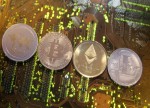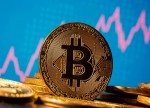
- All Instrument Types
- Indices
- Equities
- ETFs
- Funds
- Commodities
- Currencies
- Crypto
- Bonds
- Certificates
Please try another search

Chance of Fed hitting 'terminal rate' looking terminal: James Saft
 © Reuters. Clouds over the Federal Reserve in Washington
© Reuters. Clouds over the Federal Reserve in Washington
By James Saft
(Reuters) - The main thing terminal about the Federal Reserve’s 'terminal' interest rate projections are the chances of rates actually making it that high in the foreseeable future.
As expected, the Fed hiked on Wednesday by 25 basis points to 1.0-1.25 percent, but did so against an inflation and consumer backdrop which casts grave doubt that it will actually be able to reach the 3 percent 'terminal' rate it sees as a future baseline.
Arguing that recent shortfalls in inflation were “transitory,” the Fed kept to its forecast of one more 25-basis- point rate hike this year and three in 2018. This despite the fact the Fed hasn’t actually hit its 2 percent annual inflation target on its preferred measure in more than five years.
The Fed also expects to carry on hiking rates, presumably in part in order to get some ammunition to expend when next the economy falters, while at the same time moving forward with plans to begin shrinking its $4.5 trillion balance sheet “this year”.
The financial markets aren’t having any of it, and are pricing in one more increase in the next year.
Little wonder after today’s data, which should have given a data-dependent central bank good reason to pause. U.S. consumer price inflation in May fell 0.1 percent month-on-month while core, excluding food and energy, is up just 1.7 percent in a year, down from 1.9 percent a month ago. Core consumer sales also stalled in May, growing not at all.
All of this makes the Fed’s forecasts, and the hawkish tone struck by Fed Chair Janet Yellen at the press conference, look as if they are, in part, seeking to signal confidence so as to achieve ends not justified by the data.
“The Fed remains the test case for whether central banks can ever ‘normalize’ rates. We expect it to try, but fail - hiking the funds target just once or maybe twice more in future forecast-round months,” Neil Williams, Group Chief Economist, Hermes Investment Management, said after the hike.
“With the lagged effects of previous hikes yet to come through - it takes an average 18 months before rate hikes affect consumer spending in full - delayed tax cuts, potential protectionism and cold winds elsewhere, this should mean a ‘peak’ rate under two percent.”
Beyond the broader economic implications of a peak or, if you will, terminal rate below 2 percent, the prospect puts the Fed in the ticklish situation of very likely heading into a downturn dependent not just on interest rate rises but also on its willingness to begin buying assets once again. That and forward guidance, yet another largely discredited policy.
HEADING LOWER
Remember too, that one key difference since last the Fed hiked in March is that there is now much less confidence in the Trump administration’s ability to carry out either meaningful stimulative spending or midwifing a tax cut package which would do more than pump up equity prices.
To be sure, the Fed is still saying that inflation will head back up toward its 2 percent target. But with core PCE up just 1.5 percent now, the Fed’s year-end forecast of 1.7 percent is still two tenths of a percent lower than in March.
“The unemployment rate has dropped by half a point in the past four months, but the Fed now expects, comically, no further decline across the rest of the year. This makes no sense at all and likely will have to be revised in September,” Ian Shepherdson of Pantheon Macroeconomics wrote in a note to clients. The Fed also appears not to expect labor force participation to increase meaningfully.
If so, unemployment, now 4.3 percent, could tick down from here. What is striking is that the unemployment rate is falling further below the rate at which the Fed figures unemployment should accelerate, but yet it accelerates not.
Unemployment and inflation simply are not interacting as textbooks say they should. Markets are looking at the data and taking it seriously; the Fed is sticking, for now, with the textbooks.
“One side has to blink, and given the Fed's 50-year obsession with the unemployment rate, it's unlikely to be Dr. Yellen,” Shepherdson wrote.
If inflation finally comes through, the Fed will look like heroes; if not, like auto mechanics with the wrong set of tools and the wrong manual.
Related Articles
Are you sure you want to block %USER_NAME%?
By doing so, you and %USER_NAME% will not be able to see any of each other's Investing.com's posts.
%USER_NAME% was successfully added to your Block List
Since you’ve just unblocked this person, you must wait 48 hours before renewing the block.
I feel that this comment is:
Thank You!
Your report has been sent to our moderators for review






Add a Comment
We encourage you to use comments to engage with other users, share your perspective and ask questions of authors and each other. However, in order to maintain the high level of discourse we’ve all come to value and expect, please keep the following criteria in mind:
Enrich the conversation, don’t trash it.
Stay focused and on track. Only post material that’s relevant to the topic being discussed.
Be respectful. Even negative opinions can be framed positively and diplomatically. Avoid profanity, slander or personal attacks directed at an author or another user. Racism, sexism and other forms of discrimination will not be tolerated.
Perpetrators of spam or abuse will be deleted from the site and prohibited from future registration at Investing.com’s discretion.